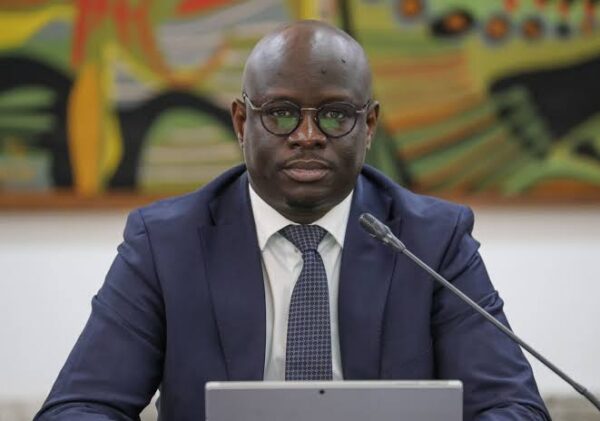Moody’s Investor Services has downgraded Senegal’s sovereign credit rating from B3 to Caa1, with a negative outlook. This decision, made public on October 10, 2025, raises serious concerns about the sustainability of the public debt and the liquidity of the Senegalese government.
What does a Caa1 rating mean?
The Caa1 rating is considered highly speculative and very risky. It reflects a high risk of default in the event of economic or financial shocks. In comparison, investment grade ratings (A, Baa) indicate a better credit quality, while Caa1 falls into the category of high yield bonds, often called junk bonds. The negative outlook indicates that further downgrades are possible if the country’s budgetary and financial conditions continue to deteriorate.
Reasons given by Moody’s
According to the agency, several factors justify this downgrade:
– A worsening trajectory of debt and liquidity risks since the last rating in February 2025.
– A debt-to-GDP ratio estimated at 119% in 2024, complicating budget adjustment efforts, despite the benefits of Senegal’s membership in the UEMOA.
– Slower progress than expected in reaching a new program with the IMF, leading the government to rely more on the regional market, which is more expensive, to cover its financing needs.
– Increased dependence on the UEMOA market, where Senegal has raised up to 8% of GDP at rates between 6.75% and 7.75%.
– Finally, Moody’s points out that debt interest costs could reach 27% of public revenues by 2026, further reducing budgetary flexibility.
Official reaction from Senegal
The Ministry of Finance and Budget reacted quickly, denouncing an evaluation that it considers “speculative, subjective, and biased,” not reflecting the country’s economic fundamentals. The authorities highlight the reforms undertaken as part of the Economic and Social Recovery Plan (PRÈS), the revision of the general tax code, and the new Investment Code, aimed at strengthening budget discipline and stimulating private investment. The government asserts its confidence in the strength of the Senegalese economy, urging investors and partners to base their analyses on “reliable and objective” data. It calls on Moody’s to show more rigor and impartiality in its evaluations, denouncing a “questionable conduct” towards Senegal.
Possible consequences of this downgrade
– Impact on financing costs: the downgrade will make borrowing conditions more expensive, reducing the appetite of foreign investors and the country’s budget flexibility.
– Liquidity and refinancing risks: without a short-term program with the IMF, Senegal could face increased pressure on its cash flow and refinancing needs.
– Credibility with lenders: a downgraded sovereign rating risks undermining the confidence of international financial institutions, making it more difficult to access new concessional financing.
– Impact on regional markets: UEMOA investors may demand higher returns to compensate for increased risk, increasing the burden of domestic debt.
What to watch for in the coming months:
– A new program with the IMF: this would help alleviate financing pressure and restore investor confidence.
– Interest rates on regional issuances: they will reflect the perception of Senegal’s sovereign risk.
– Growth and public revenues: stronger revenues would facilitate debt service management.
– Public liquidity: monitoring reserves, cash flow, and short-term borrowing margins.
– Structural reforms: improving governance, tax mobilization, and public expenditure efficiency.
In short, the downgrade of Senegal’s sovereign rating to Caa1 is a major warning signal about the country’s financial vulnerabilities. With liquidity risk, high financing needs, and dependence on regional markets, the challenge is significant. The government, while contesting Moody’s methodology, remains committed to continuing structural reforms and restoring confidence. To regain lost credibility, a swift agreement with the IMF, control of public spending, and a return to sustained growth will be essential in the coming months.


